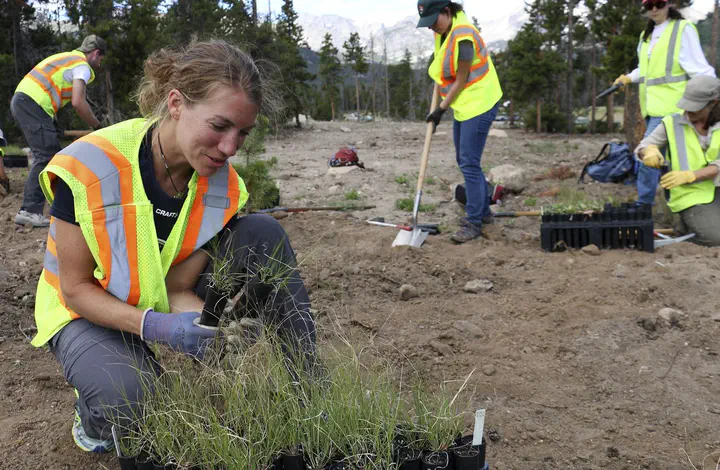Volunteering in conservation work: a double-edged sword
 ROMO Workday. Michelle planting native by National Park Service is licensed under CC-CC0 1.0
ROMO Workday. Michelle planting native by National Park Service is licensed under CC-CC0 1.0Volunteers have long played an important role in conservation work, contributing their time, skills, and enthusiasm to a wide range of initiatives. From monitoring species populations to restoring degraded habitats, volunteers are often essential to the success of conservation efforts.
However, the use of volunteer labor in conservation work is not without its challenges. One of the most significant issues is the risk that volunteering is being used as a cheap substitute for professional-paid jobs. With limited funding available for conservation work, many organizations rely heavily on volunteer labor to carry out their projects. While this may seem like a good way to stretch limited resources, it can create a number of problems.
Firstly, relying on volunteer labor can put pressure on those volunteers to work longer hours or take on tasks that are beyond their skill level. This can lead to burnout, frustration, and a lack of quality work. Additionally, volunteers may be unable to commit to long-term projects, meaning that organizations must constantly recruit and train new volunteers, which can be time-consuming and costly.
Secondly, the use of volunteer labor can exacerbate existing inequalities in the conservation sector. Those who can afford to volunteer their time may come from more privileged backgrounds, while those who cannot be excluded from opportunities to gain experience and build networks in the field. This can limit the diversity of perspectives and experiences within the conservation community.
So, what can be done to address these issues? One solution is to ensure that volunteering is only used in a supplementary capacity, rather than as a primary means of carrying out conservation work. Organizations should prioritize paying professionals for their work while utilizing volunteers in roles where they can provide additional support without being relied upon to carry out essential tasks.
Another solution is to make sure that volunteer programs are designed in a way that is equitable and inclusive. This could involve providing training and support to help volunteers develop their skills and knowledge, offering compensation for expenses incurred while volunteering, and actively seeking out volunteers from diverse backgrounds.
Overall, while volunteer labor can be a valuable asset to conservation efforts, it is important to be mindful of the potential risks and challenges associated with its use. By prioritizing paid professional work and creating inclusive volunteer programs, we can ensure that conservation work is carried out effectively and equitably.
- Ballantyne, R., Packer, J., & Hughes, K. (2009). Tourists’ support for conservation messages and sustainable management practices in wildlife tourism experiences. Tourism Management, 30(6), 658-664. https://doi.org/10.1016/j.tourman.2008.12.003
- Cooper, C. B., Dickinson, J., Phillips, T., & Bonney, R. (2007). Citizen science as a tool for conservation in residential ecosystems. Ecology and Society, 12(2), 11. https://doi.org/10.5751/ES-02197-120211
- Reed, M. S., Stringer, L. C., Fazey, I., Evely, A. C., & Kruijsen, J. H. (2014). Five principles for the practice of knowledge exchange in environmental management. Journal of Environmental Management, 146, 337-345. https://doi.org/10.1016/j.jenvman.2014.07.021